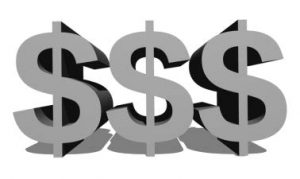If you’re not familiar with the above three investment terms that relate to commercial real estate, here’s an explanation of them. These are terms that investo rs will oftentimes utilize when evaluating potential commercial real estate investments, when deciding whether or not they’ll invest in them.
rs will oftentimes utilize when evaluating potential commercial real estate investments, when deciding whether or not they’ll invest in them.
The first term, “cap rate”, is a very simple term to understand. The cap rate is simply the net income of the property divided by its purchase price. So, for example, if there was a property that you were considering buying at a price of $1,000,000.00, and the annual net income on the property was $80,000.00, the cap rate would be 8%.
The cap rate is a basic measure of the return on investment for a property, and if you’ll be paying all cash, this is the only one of these three terms mentioned above that you’ll be utilizing. The other two terms, “cash flow” and “cash-on-cash return”, only are utilized when you’ll be getting financing to complete your purchase.
Cap rates will vary depending on how hot the real estate market is at any given moment in time, and when the market is hotter the cap rates will tend to be lower, as more people become interested in buying and the overall demand to purchase properties increases. Conversely, when the market cools off, owners will oftentimes need to sell their properties at a higher cap
rate, because the number of interested buyers will typically be lower, and the current economic conditions will then cause the remaining buyers to demand better prices.
Then the second term, “cash flow”, means how much cash the property will generate annually for you after all expenses are taken into consideration, including all of your loan payments. So in the same example that we gave above, if for the $1,000,000.00 property the annual loan payments on it were $60,000.00, the annual cash flow on the property would then be $20,000.00, based upon the property’s annual net income of $80,000.00.
Then in putting all of this together, investors will then want to know the “cash-on-cash return”, which is the annual cash flow divided by the down payment for the property. So in continuing on with the same example, if you had made a down payment of $300,000.00 to purchase the property, with the annual cash flow now having been determined to be $20,000.00, your cash-on-
cash return would now be $20,000.00 divided by $300,000.00, or 6.67%.
So all three of these investment terms will often be utilized by commercial real estate investors whenever they’re buying property and getting financing. In addition, whenever the cap rate rises for a specific property with all other things still being equal, the cash flow and the cash-on-cash return for the property will rise, too.
So all of this then ties together between the purchase price, the down payment, the net income, the interest rate, and the monthly loan payments to be paid on the loan. If interest rates were to rise, the cap rate would still remain the same, but the cash flow would diminish because of the higher total annual loan payments now being made on the property. In addition, when something like this happens, all-cash buyers can now end up in the driver’s seat, because their competitors who needed financing to purchase can’t make the potential investment pencil out for them as well
anymore at the new, higher interest rates, and they’ll lose interest in buying.
If you have any questions about this, or if you have any questions about investing in commercial real estate, please give me a call.
